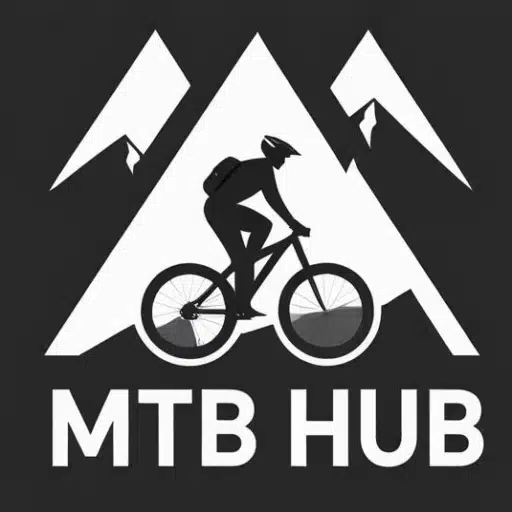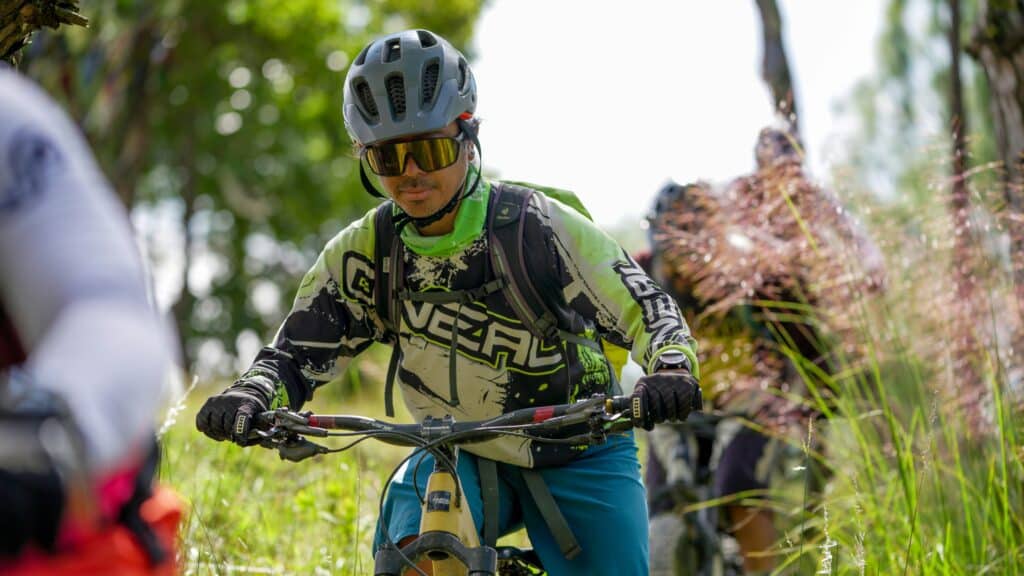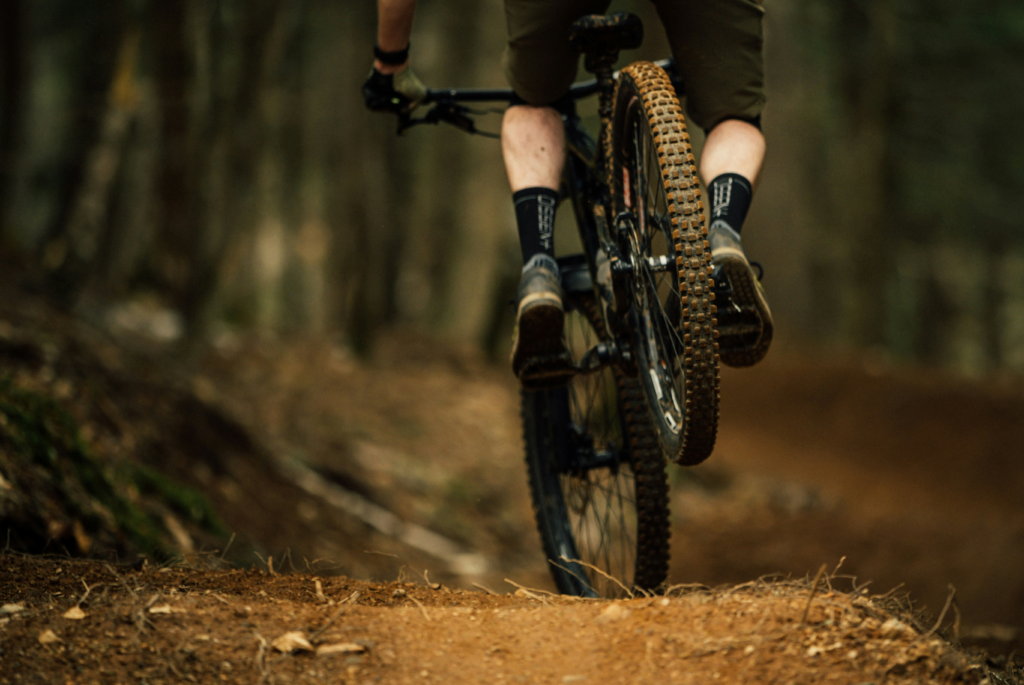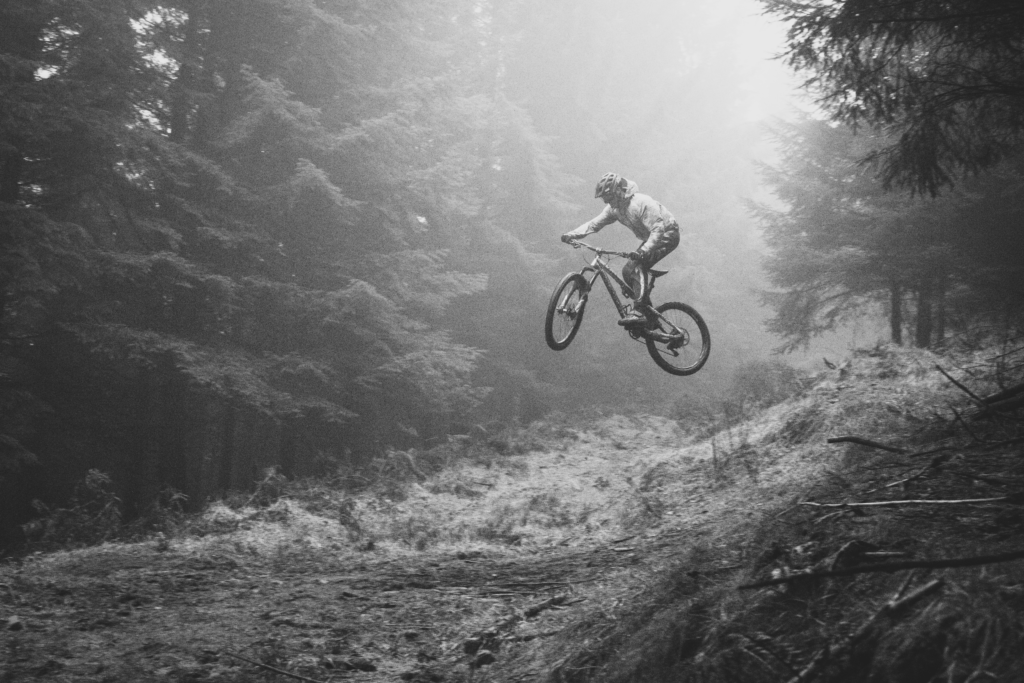Choosing your first bike or upgrading to a new one should be exciting, not stressful. Yes, there are loads of options out there. Road bikes, gravel bikes, mountain bikes, hybrids – the list goes on. But here’s the good news: each type is designed for specific kinds of riding. So what bike should you get? It all comes down to where and how you want to ride.
Let’s break down the main bike categories together. Then we’ll dive into mountain bikes, which offer some of the most fun and varied riding experiences you can have on two wheels.
Quick Overview: Other Bike Types
Before we get to the exciting stuff (mountain bikes!), let’s quickly cover the other main bike categories.

Road Bikes are built for speed on tarmac. Think thin tyres, drop handlebars, and super lightweight frames. They’re brilliant for fitness rides, group rides, and racing on smooth roads. But they’re definitely not happy on rough surfaces. If you only ride on tarmac and love going fast, a road bike might be calling your name.
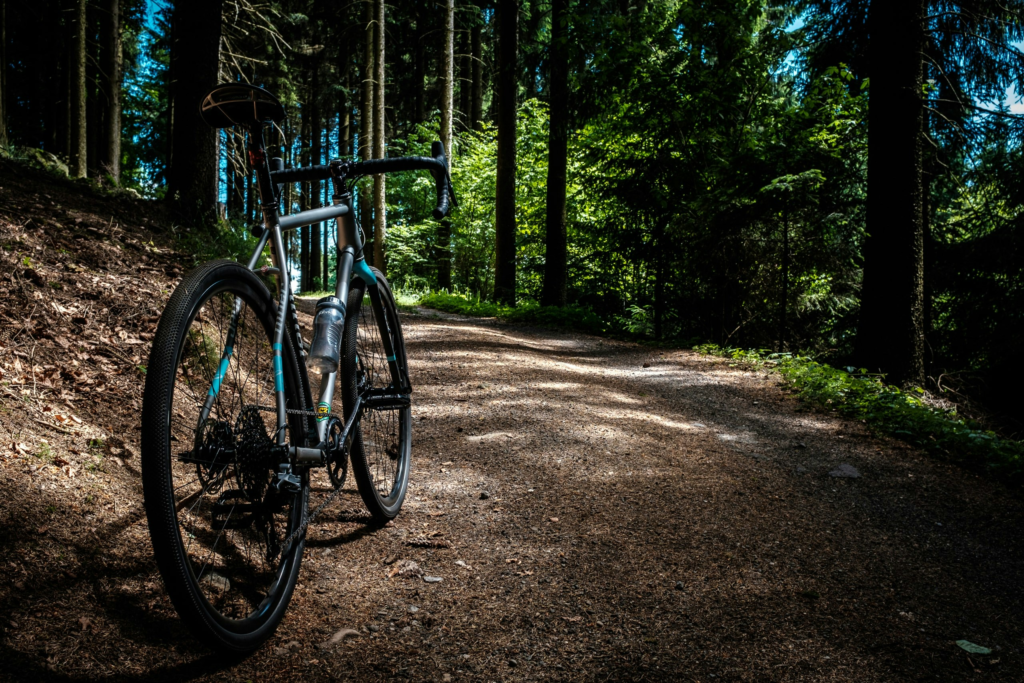
Gravel Bikes are like road bikes that said “let’s have more fun.” They have wider tyres and can handle dirt roads and light trails. They offer more comfort and way more versatility. Lots of riders love them for bikepacking adventures. They’re perfect if you want one bike for both tarmac and unpaved roads.
Hybrid Bikes are the friendly middle ground between road and mountain bikes. Flat handlebars, medium-width tyres, and a comfortable upright position. They’re great for casual rides around town, cycle paths, and easy trails. If you want something simple and versatile for errands and relaxed recreation, hybrids are solid choices.
Commuter Bikes are your practical daily drivers. They often come with mudguards, racks, and lights already fitted. They prioritise getting you places comfortably over going fast. Perfect for your daily commute or running errands around the city.
Now let’s talk about the really fun stuff: mountain bikes!
Mountain Bikes: Your Ticket to Adventure
Mountain bikes are designed to take you off the beaten path. They have wide, knobbly tyres that grip dirt and rocks and suspension that smooths out bumps and roots. They have flat handlebars that give you brilliant control. And they’re built tough to handle whatever the trail throws at you.
But here’s where it gets interesting. “Mountain bike” is actually a whole family of bikes. There are several different types, each designed for a specific style of riding. The key is matching the bike to the kind of fun you want to have.
Cross Country (XC) Mountain Bikes
The Speedy Climber
XC bikes are the lightest and fastest mountain bikes. They typically have 100-120mm of suspension travel. Some are hardtails with only front suspension, which keeps them even lighter and more efficient.
These bikes love climbing and covering big distances. The geometry puts you in a forward position that helps you power up hills. Everything is designed for speed and efficiency. Lightweight frames. Responsive handling. Firm suspension.
XC bikes are fantastic if you love the challenge of climbing and want to go fast. They shine on smoother trails and fire roads. They’re perfect for racing or long adventure rides. The trade-off? They can feel a bit harsh on super rough, technical descents. That’s not really their thing.
Get an XC bike if: You love the fitness aspect of riding. Climbing makes you happy. You want to race or do long endurance rides. Your local trails are relatively smooth without crazy technical features.
Trail Mountain Bikes
The Fun-For-Everything Bike
Trail bikes are the most popular mountain bikes, and it’s easy to see why. They’re like the golden retriever of bikes—friendly, capable, and ready for anything. With 120-150mm of suspension travel, they climb well enough and descend confidently. They’re genuinely fun on all kinds of terrain.
The geometry is perfectly balanced. Comfortable enough for long climbs. Playful enough for technical descents. You sit in a natural, relaxed position. The suspension handles both climbing efficiency and bumpy trails beautifully. These bikes just feel good to ride.
Trail bikes handle everything from mellow cross-country loops to rowdier bike park features. You can ride for hours without getting beat up. Then you can confidently descend technical terrain. They’re the best at exactly nothing, which makes them brilliant at everything.
Trail bikes match how most people actually want to ride. A little climbing, some descending, lots of playing around. If you’re buying your first mountain bike or want one bike that does it all, this is absolutely your answer.
Get a trail bike if: You want maximum versatility. You ride different kinds of terrain. You’re not totally sure what style you’ll love most. You want one bike that makes you smile no matter what.
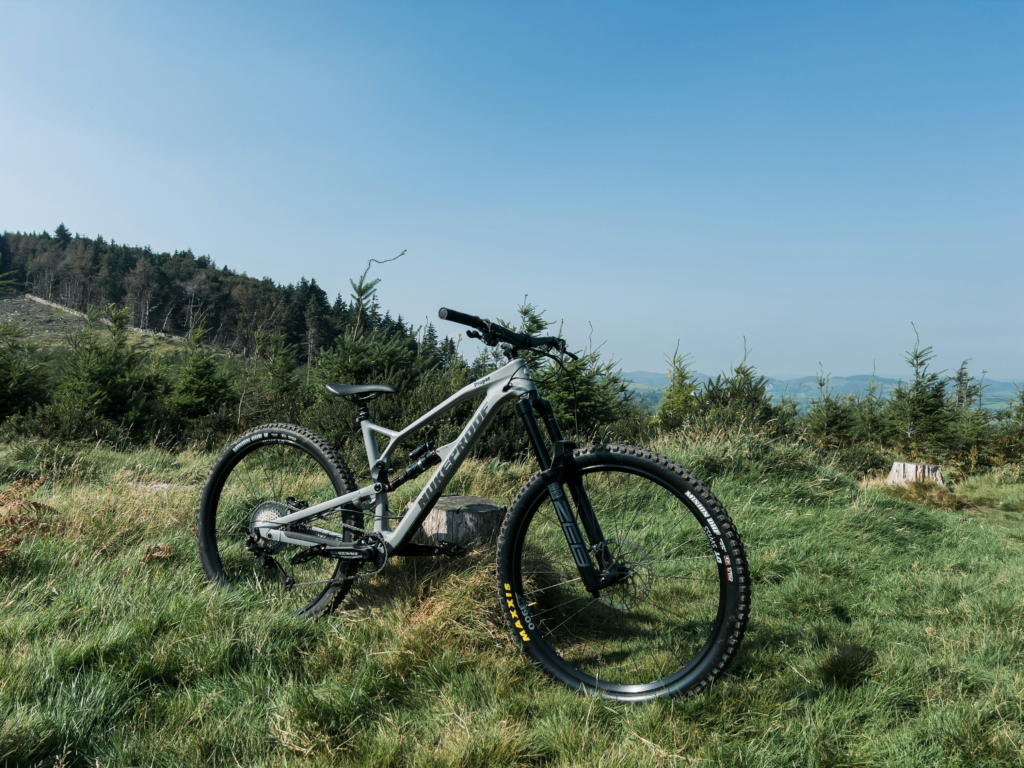
Enduro Mountain Bikes
The Downhill Enthusiast
Enduro bikes are for riders who live for the descents. They have 150-180mm of suspension travel. The geometry is slack and stable at speed. Everything about them says “let’s go fast downhill.”
The extra suspension soaks up big hits and rough terrain. The slack angles keep you balanced on steep sections. The longer wheelbase adds stability when you’re flying. These bikes give you the confidence to ride faster and tackle bigger features than you ever thought possible.
Now, enduro bikes still climb. They’re definitely heavier than trail bikes, so you’ll work a bit harder going up. But many have clever features like adjustable geometry or climb switches to help. They’re designed for riders who see climbing as the price of admission for amazing descents—and totally worth it.
Enduro bikes are for riders who prioritize rowdy, technical descending. If you regularly ride steep, challenging trails, an enduro bike will feel like a superpower. But if your local trails are pretty mellow, it might be more bike than you need.
Get an enduro bike if: You’re comfortable on technical terrain. You get excited about steep, challenging descents. You’re happy to work harder on climbs for way more fun on the way down. Your local trails have serious elevation and technical features.

Downhill Mountain Bikes
The Pure Adrenaline Machine
Downhill bikes have one job: getting you down the mountain as fast as humanly possible. With 180-220mm of suspension travel and geometry designed purely for descending, these bikes are serious tools for serious gravity riders.
They’re heavy – usually 35-40 pounds or more. They have beefy dual-crown forks. The geometry makes pedalling uphill basically impossible. But when you’re dropping into a downhill run? Nothing else comes close. They’re stable at ridiculous speeds. They absorb massive impacts like they’re nothing. They let you push your limits in ways other bikes just can’t.
Here’s the catch: downhill bikes need lifts or shuttles to get you to the top. You really can’t pedal them uphill for any distance. They’re specifically for bike parks, shuttle days, and pure gravity riding.
Get a downhill bike if: You have regular access to bike parks or shuttle services. You want to focus purely on descending. You already own another bike for regular trail riding. You’re serious about gravity riding or downhill racing.
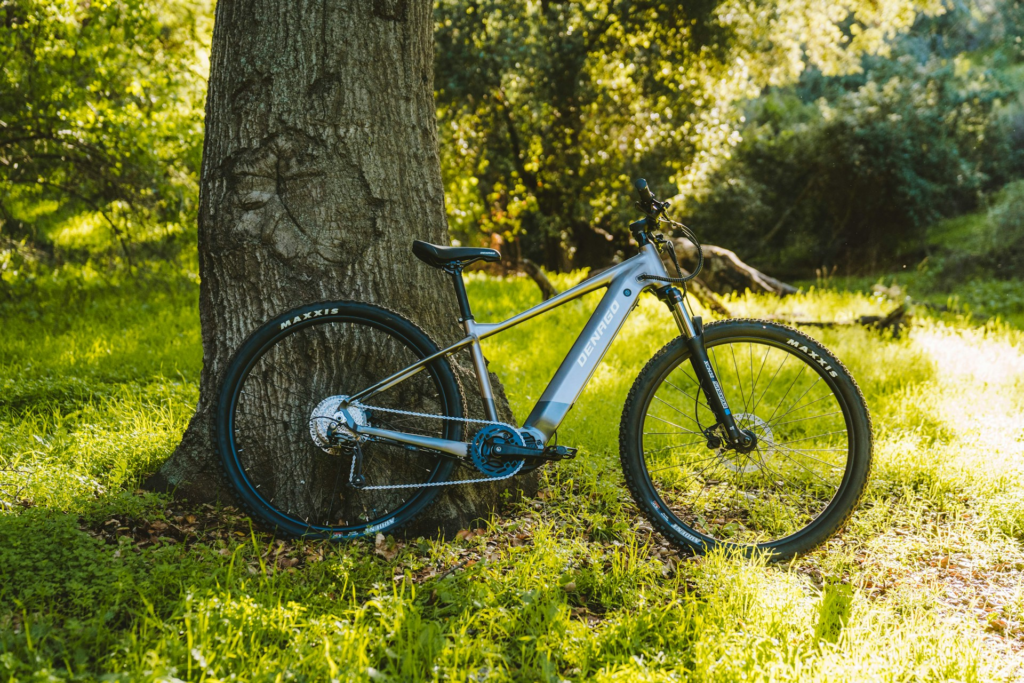
E-Bikes (Electric Mountain Bikes)
E-bikes – or eMTBs – have a motor that assists your pedalling, and they’re absolutely brilliant fun. They come in all the same categories as regular mountain bikes (XC, trail, enduro) but with a battery and motor that help you climb faster and ride longer. Don’t think of them as “cheating” – you’re still pedalling and working hard, but you can tackle steeper climbs, ride with faster mates, or simply fit in more descents per ride. They’re heavier than regular bikes (usually around 20-25kg) and more expensive, typically starting around £2,500 for entry-level models. But if you want to explore more terrain, recover from an injury whilst staying active, or just have more fun without being completely knackered, an e-bike might be perfect. The battery range varies, but most give you 2-4 hours of riding depending on how much assistance you use.
Let’s Talk About Budget
Money matters, so let’s be real about what you can expect at different price points.
Under £500: You’re looking at basic hardtail mountain bikes or entry-level hybrids. These work fine for casual riding on easy trails and cycle paths. But they’ll have heavier frames and basic components. Perfect for getting started or very occasional riding.
£500-£1,000: This is where things get interesting. You can find decent hardtail mountain bikes with better components. Some entry-level full-suspension bikes appear at the top of this range. This is a solid budget for beginners who want a bike that’ll grow with them.
£1,000-£2,000: Now you’re in the sweet spot for quality trail bikes. You’ll find good full-suspension bikes with reliable components. These bikes will handle real mountain biking well. Most recreational riders will be happy in this range.
£2,000-£4,000: This is where serious mountain bikers live. You get lighter frames, better suspension, and components that perform really well. Trail and enduro bikes in this range are fantastic. If you’re riding regularly and know you love it, this investment makes sense.
£4,000+: High-end territory. Carbon frames, top-tier suspension, premium components. The bikes are noticeably lighter and perform better. But the improvements are incremental. These are for serious enthusiasts and racers who want the best.
Don’t forget ongoing costs! Budget for a helmet, gloves, and pedals right away. Over time you’ll want spare tubes, a pump, and basic tools. Plan to spend another £200-£400 on essential kit when you get your bike.
So what bike should you actually get?
Here’s a friendly decision framework to help you out:
Start with where you’ll ride. Do you have mountain bike trails nearby? Are they smooth and flowy or steep and gnarly? Do you live near a bike park? Your local terrain is your best guide.
Think about what gets you excited. Does the challenge of a tough climb make you happy? Do you daydream about bombing down technical descents? Or do you just want to explore trails and enjoy being outside? Follow your excitement.
Consider your experience level. If you’re new to mountain biking, start with a trail bike. It’ll let you explore everything before you specialize. If you’re experienced and know exactly what you love, go for the bike that matches your passion.
Set a realistic budget. Be honest about what you can spend. Remember that a £1,500 bike you can afford is way better than a £4,000 bike that stresses you out financially. You can always upgrade later.
Be honest about reality versus fantasy. We all imagine ourselves doing epic rides. But what will you actually do most weekends? Choose the bike for your real riding, not your imagined riding. You’ll be much happier.
The Bottom Line
The best bike is the one that makes you want to ride. Not the one that looks coolest, or what your buddy rides or even the most expensive one. The one that matches your actual riding style and makes you smile.
For most people getting into mountain biking, a trail bike is the perfect starting point. It’s versatile enough to let you try everything. As you ride more, you’ll discover what you love most. Then you can get more specific with your next bike.
But here’s the real secret: any bike is better than no bike. Start with something that fits your budget and local trails. Then get out there and ride. Your experience will naturally guide you toward your perfect bike over time.
So what bike should you get? Honestly, get the one that makes you excited to wake up early on Saturday morning and go ride. That’s the right bike.
